Usually, when you hear about travelers headed to Nepal, they’re highly skilled athletes aiming to climb Mount Everest. That’s no wonder, given that Nepal is home to Mount Everest (the highest point on Earth), plus seven more of the highest mountains in the world. But Nepal had roughly 600,000 visitors in 2022, and only 425 climbers summited Everest. So it’s clear the vast majority of visitors to Nepal aren’t headed to bag the world’s highest peak.


5 Gorgeous Nepal Hiking Routes if You're Not Up for Doing Everest
So where are all those visitors heading? Easy answer: to one of the many other gorgeous mountains, national parks, villages, and regions of the roughly 57,00-square-mile country. As many visitors have discovered, there are amazing Nepal hiking trails that require zero training and are just as breathtaking, literally and figuratively, as Everest.
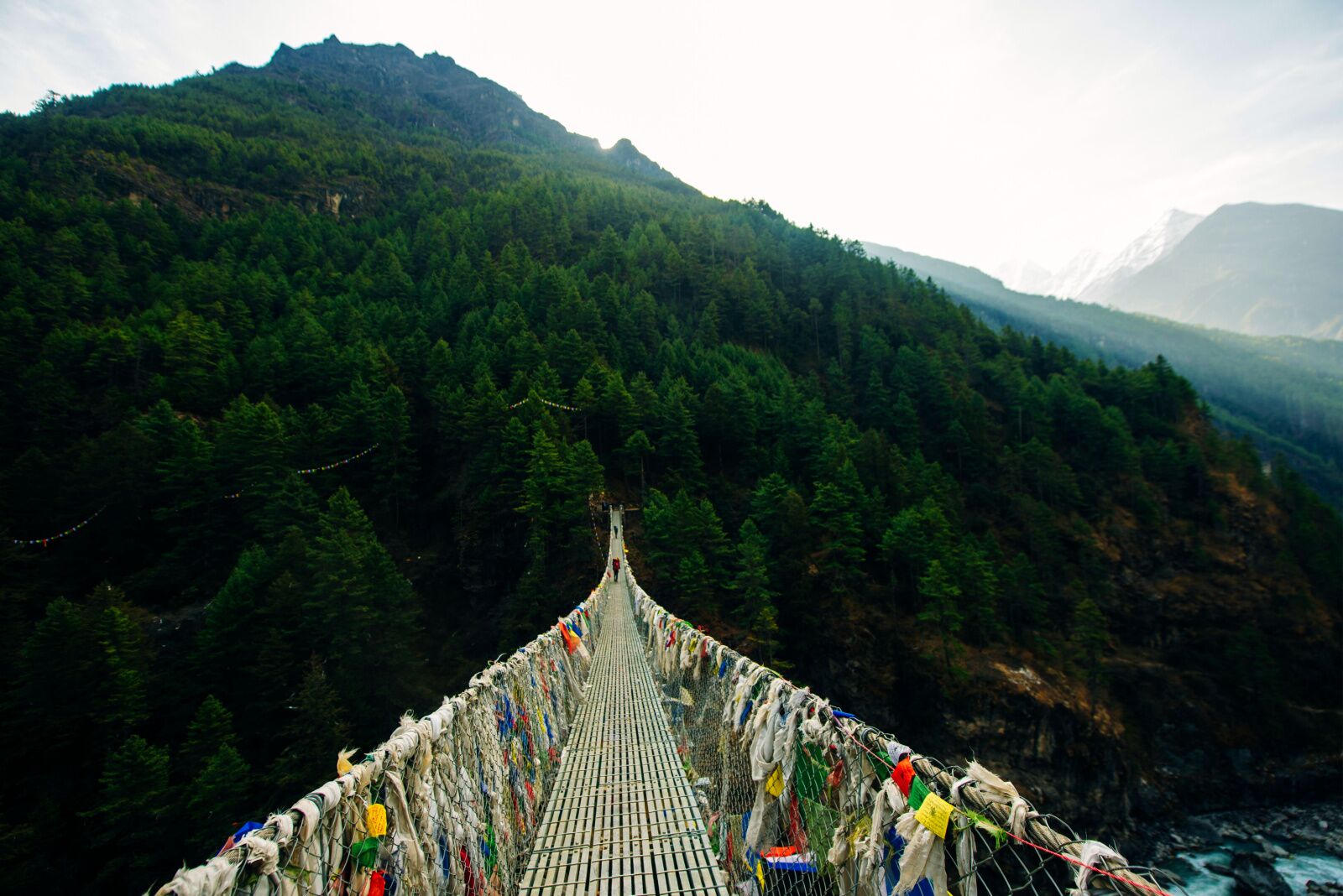
Photo: Brester Irina/Shutterstock
“We like to say ‘Mountain is about attitude, not altitude,’” says Bimal Karki from Apex Himalaya, one of the top-rated Nepal hiking companies based in Kathmandu. His brother Bikram and their team of certified mountain guides led trips to fit a wide range of ages and abilities. “We have experience hiking in the mountains with kids as young as three years, on up to 68 years old, from healthy people to people who suffer from asthma. Nepal offers different grades of adventurous activities from beginner hikers to hardcore mountaineers, and from backpacker to lavish traveler.”
If epic mountain vistas, fresh dumplings, spiced tea, and vibrant culture sound up your alley, but months of intense physical training does not, consider one of these five alternate Nepal hiking routes that any moderately fit person can totally handle.
Remember that hiking ratings are relative, and Nepal hiking comes with the added challenge of extremely high elevation. “Easy” for Nepal may still feel hard if you’re used to hiking in US state parks at sea level. Fortunately, using a guiding company is extremely common, and whether you book online in advance or find a guide when you arrive in the country, you’ll be able to ask questions before you begin. Guides can often alter routes in case of poor weather, arrange transportation to cut off more difficult sections, and find different types of lodging if shared teahouses aren’t your thing. If you’re very worried about your ability, book a private tour and discuss alternate and back-up hiking options with your guide in case your legs get too sore on day three to make it to day six.
1. Ghorepani and Poon Hill
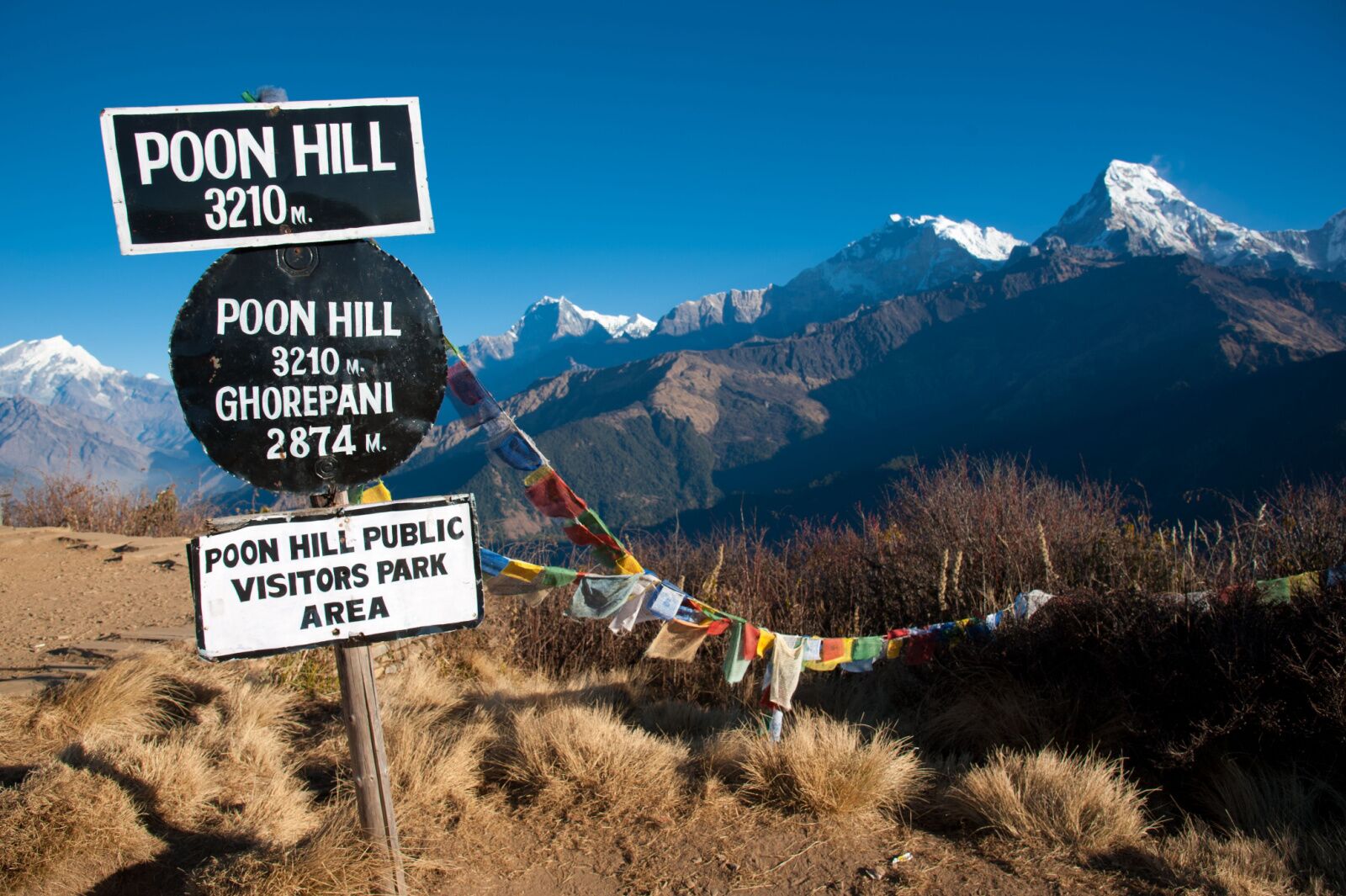
Photo: wolfmaster13/Shutterstock
- Distance: 12 miles +
- Perfect for: Easier multi-day hiking, beginners
- Elevation gain: 4,750 feet +
- Recommended number of days: 1-4
Hiking around Ghorepani — specifically, to the popular Poon Hill — is one of the easiest Nepal hiking routes in the country. It’s generally recommended for beginners and anyone looking for a relatively doable outdoor experience.
If you opt for the shortest hike, it’s a 6-mile each-way route that gains a substantial amount of elevation gain. You can do it in a single day and can go with or without a tour operator. However, most people choose to visit this area as a multi-day trip.
Companies like Nepal Hiking Team offer it as a 6- or 8-day trip with four days of trekking through the region. You’ll hike through valleys filled with wildflowers and through massive oak forests. Lodging is in small towns to spend the night at villages you’ll reach by crossing suspension bridges and navigating through farmland. Porters are always available to carry gear, so you’ll just need to carry a day pack — and your camera, since most people hike around Poon Hill for the fabulous views of summits like Dhaulagiri I, Annapurna I, and Nilgiri.
In fact, the Poon Hill hike is also known as the “Annapurna Sunrise Hike” due to the fantastic view of the sunrise you’ll catch from the summit.
2. Shivapuri Peak in Shivapuri National Park
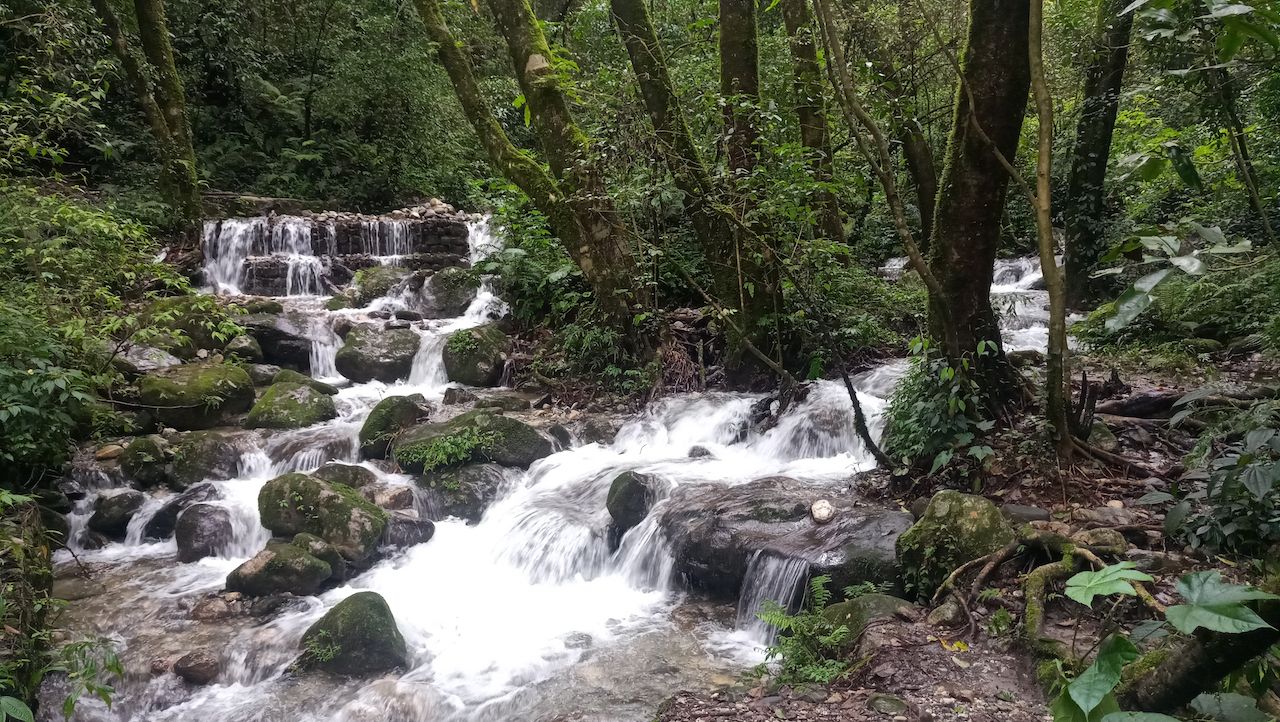
Photo: Nepalifilmmaker/Shutterstock
- Distance: 11 miles +
- Perfect for: One-day hikes and quick overnights from Kathmandu
- Elevation gain: 2,950 feet +
- Recommended number of days: 1-4
It’s hard to believe that just 30 minutes from the dusty cacophony of Kathmandu’s lovable chaos is a place where the only sounds you’ll hear are birds chirping, a bubbling stream, and the occasional monkey hooting from the treetops. But Shivapuri National Park has all that and more. It’s one of the best places for Nepal hiking if you only have a day or two to spare in your vacation. You can do a single all-day hike — the route from Pani Muhan to Nagi Gompa (a Buddhist temple) to Shivapuri Peak and back — or opt for a longer multi-day trip. You can also do point-to-point hikes that start in the park and connect to other areas of Nepal, like the 5-day Shivapuri guided trek with Alpine Eco Trekking.
One day hikes can be booked as a single-day activity, or with a tour that includes one day of hiking, plus transportation from Kathmandu, a night or two at a nearby hotel, and visits to a few other sites. But it’s also one of the easier Nepal hiking routes to do yourself. You just need to buy a park ticket from the national park office near the Budanilkhanta Temple. The route is generally easy to follow and well-marked.
3. Langtang National Park trekking
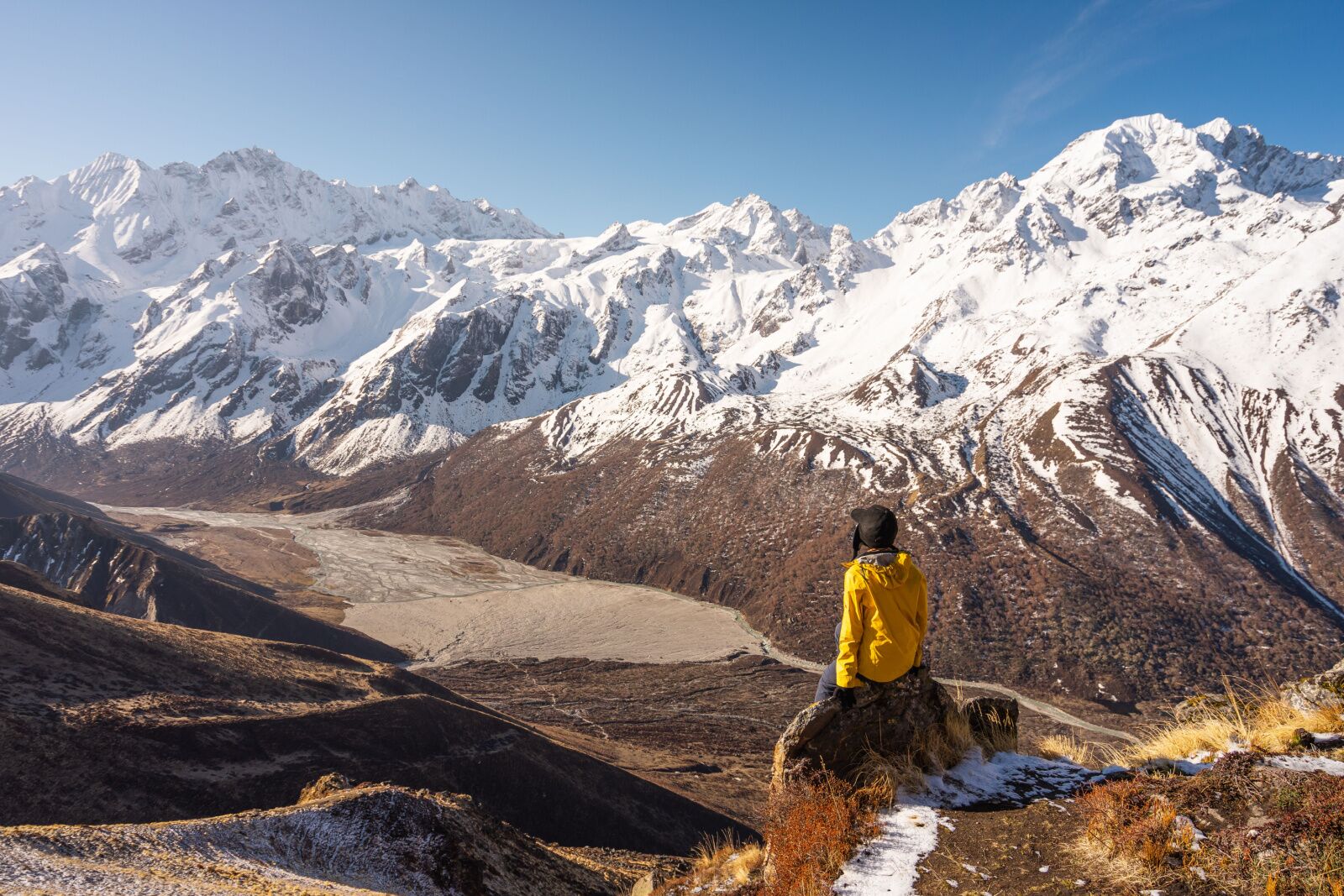
Photo: Punnawit Suwattananun/Shutterstock
- Distance: Varies
- Perfect for: Variety and customized trips
- Elevation gain: Varies
- Recommended number of days: 3+
Langtang National Park is one of Nepal’s better-kept secrets, and it’s likely you’ll see more donkeys navigating the winding footpaths than fellow tourists. The literal pinnacle of your trek will be reaching the summit of Kyanjin Ri. From there, you’ll be mere feet from the imposing Langtang Lirung and have unobstructed, nearly 360-degree views of the stunning Himalayas. Be sure to find the plaque marking the elevation and take your token summit photo among a shrine of Tibetan prayer flags. After hiking down, replenish your energy with fresh yak cheese or a yak-milk latte.
Langtang-area trails range from short trips you can do in one or two nights to multi-day routes with 10- or 20-thousand foot elevation gains. Many Nepal trekking companies offer self-guided trips, which should indicate the relative easy of trail finding and hiking in the area. If you opt for a self-guided trip, the company will usually take care of all your reservations and transportation, and provide you with a route map (and satellite phone, usually) with specific details about where to hike each day.
However, there are plenty of fully guided treks in the area, too. Scenic Nepal Treks offers an “easy” 9-day trip with stops at small villages, suspension bridges, and the Kyanjin Monastery, and Magical Nepal offers an expedited similar version with six days of hiking.
No matter what trip you pick, you may be able to see the park’s resident endangered species, like red pandas and Himalayan black bears. You may also want to consider an overnight stay at Gre Village Community Homestay, especially as it shows the hard-earned recovery from the devastating 2015 earthquake.
4. Gokyo Lakes
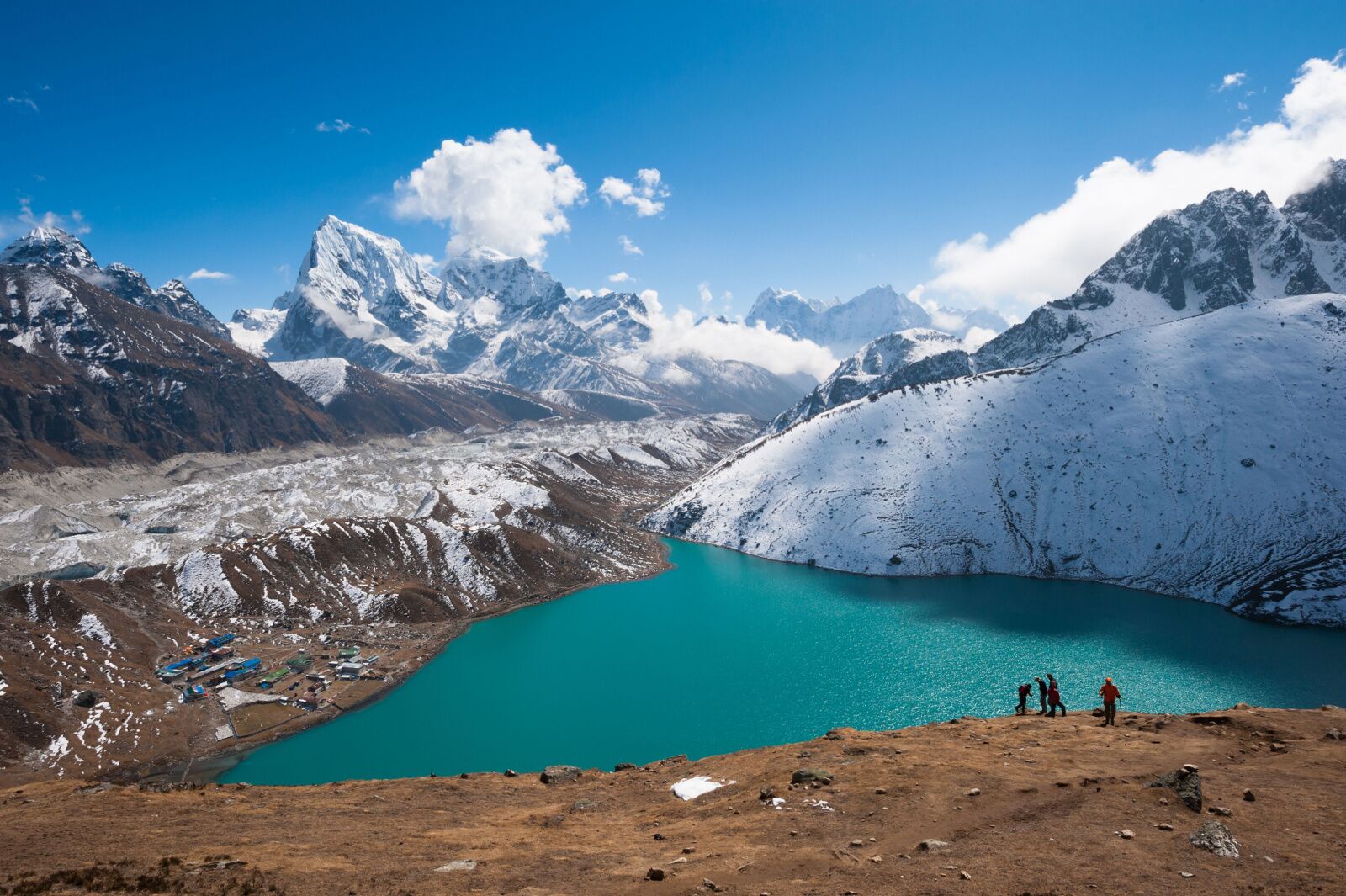
Photo: Yongyut Kumsri/Shutterstock
- Distance: +/- 57 miles
- Perfect for: An introduction to hiking at altitude
- Elevation gain: +/- 21,400 feet
- Recommended number of days: 9-15
Gokyo Lakes is a good pick for when you want a long, bucket-list Himalayan trek, but aren’t ready to commit to a massive training plan with elevation acclimatization and ice axes. The route is completely non-technical, with an average of around 900 -1,200 feet of elevation gain per day. Most companies offer the tour at a rather leisurely pace, so there’s plenty of time for hikers who need to move slower or take frequent breaks. Of course, having strong leg muscles will help, but Adventure Alternative describes the trek as “not a forced march, with a gradual ascent to high altitude.” So you’re unlikely to be trekking with super-athletes trying to race to the top.
The route starts in the valleys where most sherpas are from, then passes the glacier-blue Gokyo lakes before continuing to climb to a viewpoint looking out on some of Everest’s tallest mountains. There are also stunning glacier views along the route, plus sections through sprawling forest and along river valleys. The turn-around point for the hike is the Everest base camp near the Khumbu Glacier, responsible for the famous Khumbu Icefall, which is known as one of the most dangerous sections of Everest. Fortunately, anyone on this Nepal hiking route doesn’t have to worry about making it through the icefall, since Gorak Shep (a nearby small village beneath the basecamp) is the highest place you’ll sleep.
You’ll sleep in lodges along the way and have porters (if you’d like) to carry most of your gear. So while no one would call it easy, you just need to be in good shape, not an Olympic-level athlete. Note that different tours take different routes, so your mileage and elevation gain could definitely vary.
5. Annapurna Base Camp Trek
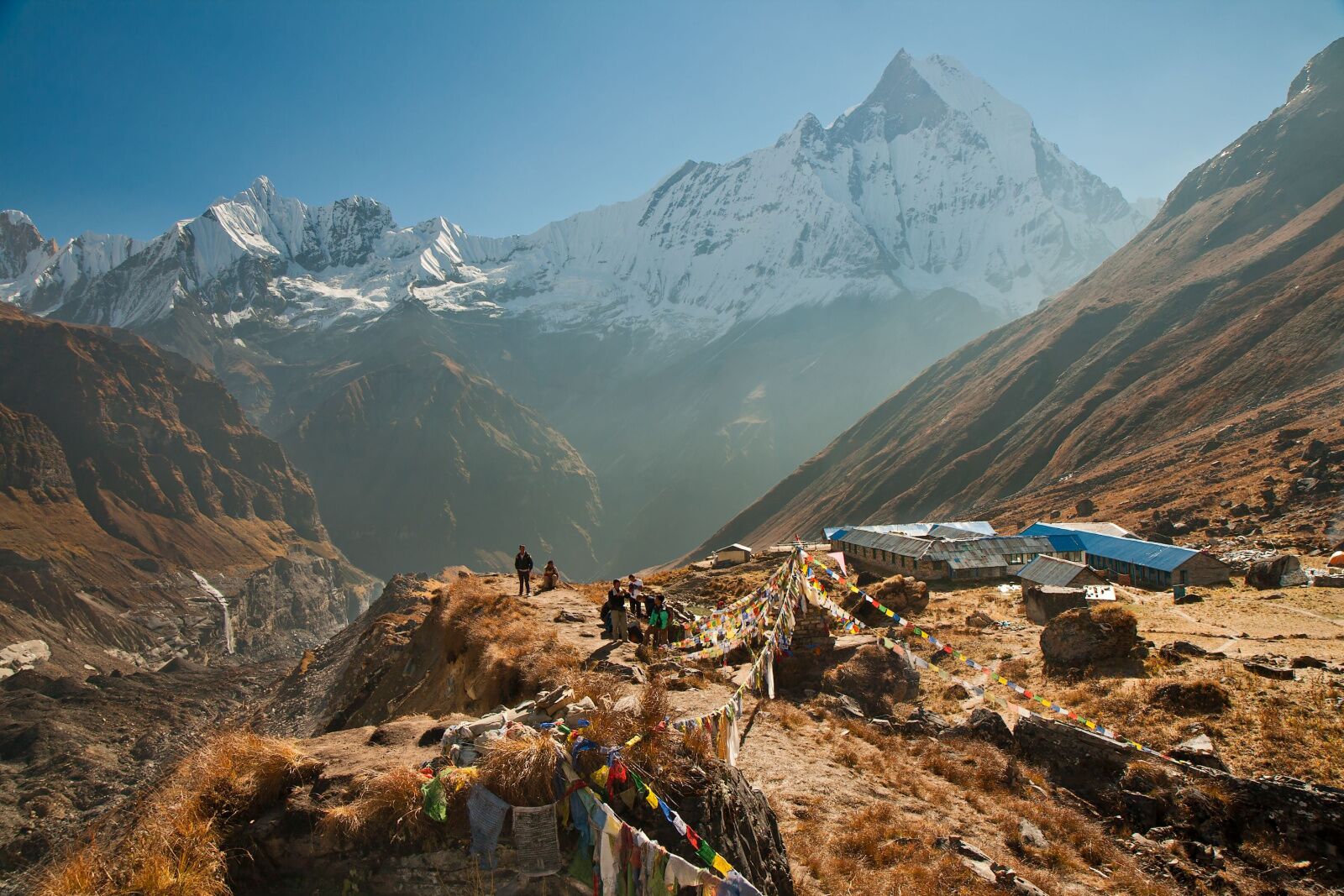
Photo: Yulia_B/Shutterstock
- Distance: 69 miles
- Perfect for: hikers looking for the Nepalese trifecta: mountains, culture, and history
- Elevation gain: 35,000
- Recommended number of days: 10-12
Okay, no one would say the Annapurna Base Camp Trek is easy. But it’s certainly easier than Everest, and it’s usually rated as a four-out-of-five on difficulty scales. Intrepid Travel describes it as “Be prepared for some serious physical activity. The fitter you are, the more you’ll enjoy it, as most activities will be challenging.” On the route, you’ll hike through small villages, past waterfalls, and along mountain passes where you’ll alternate between hating the pain in your muscles and feeling grateful that you’re able to explore such a magnificent section of the world.
You’ll generally hike between 4 and 8 miles a day, depending on the elevation gain. Lodging each night is in teahouses along the route. When you’re searching for a guide, you may see this Nepal hiking route also called the “Annapurna Sanctuary Trek,” but it’s the same thing. No matter what you call it, it’s the closest you can get to Annapurna — the 10th highest mountain in the world — without actually summiting it. It’s one of the hardest Nepal hikes on this list, but as Trek the Himalayas describes it, first-time trekkers can do it (though some hiking/trekking experience can certainly help).
Matador staff contributed to additional reporting on this piece.